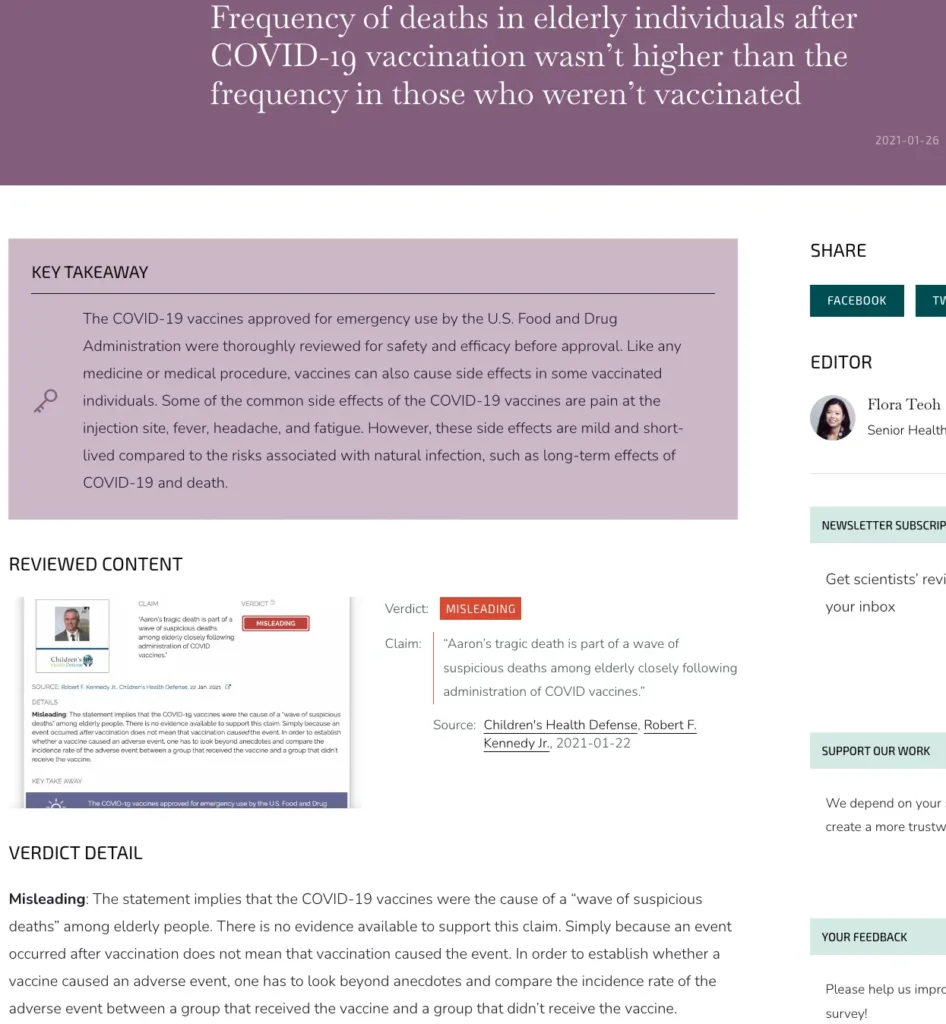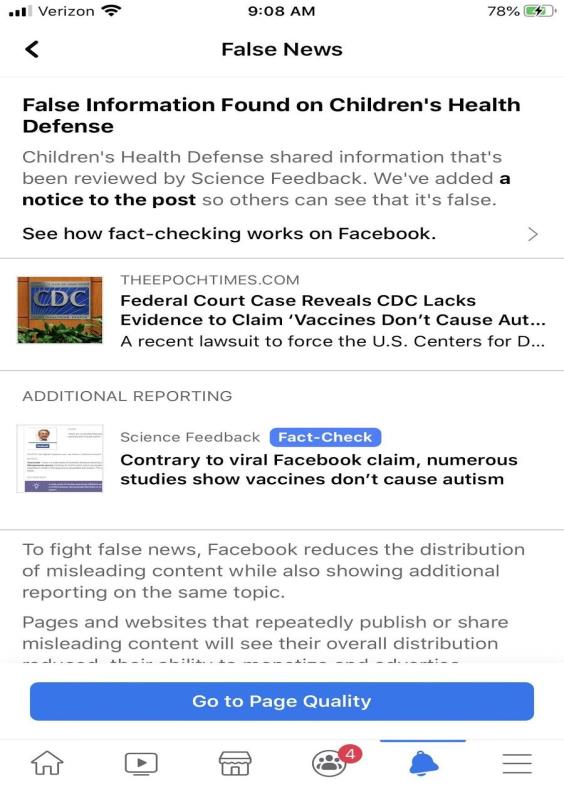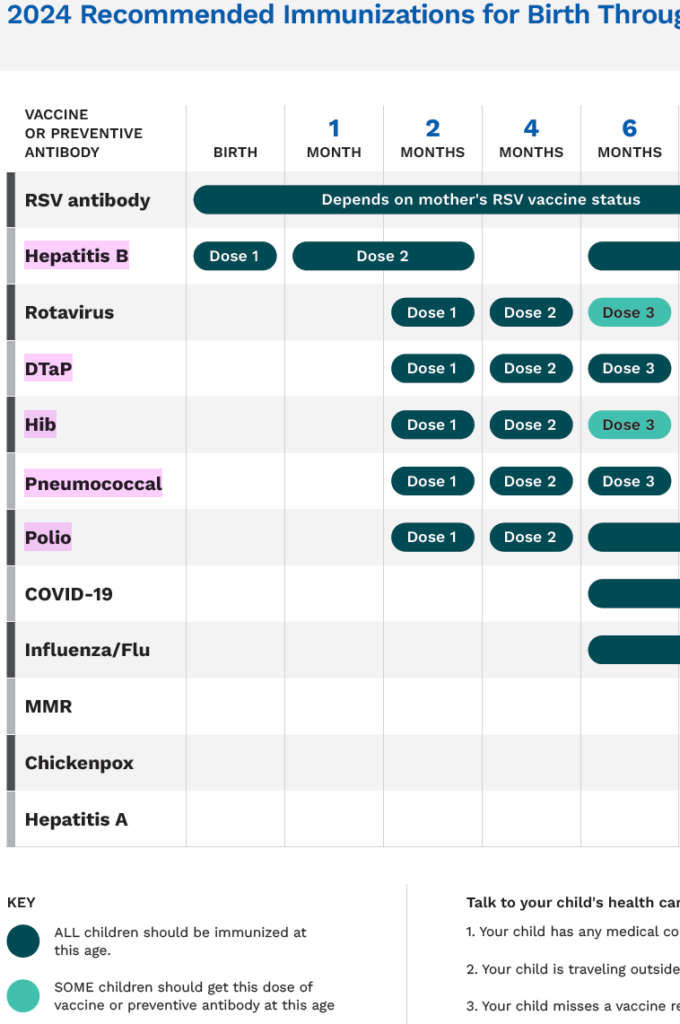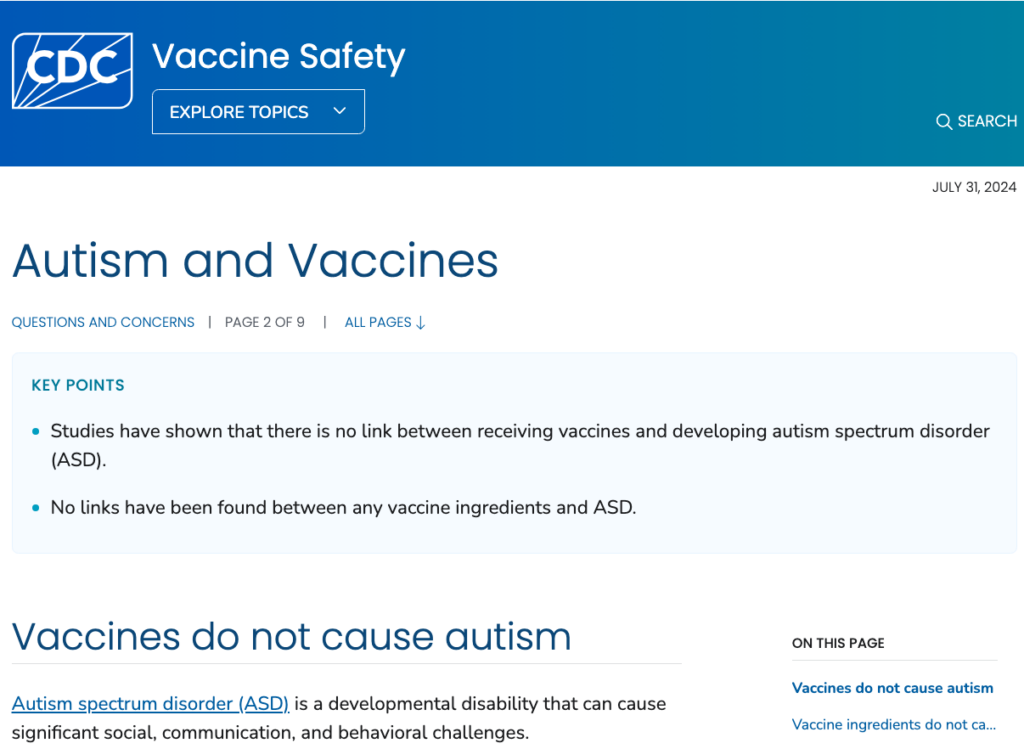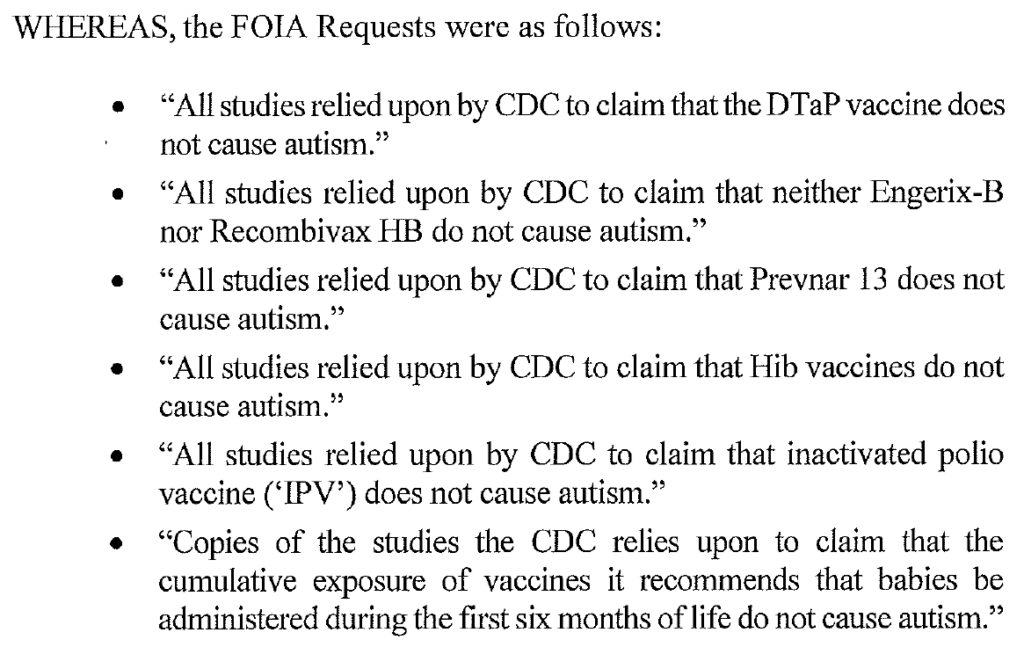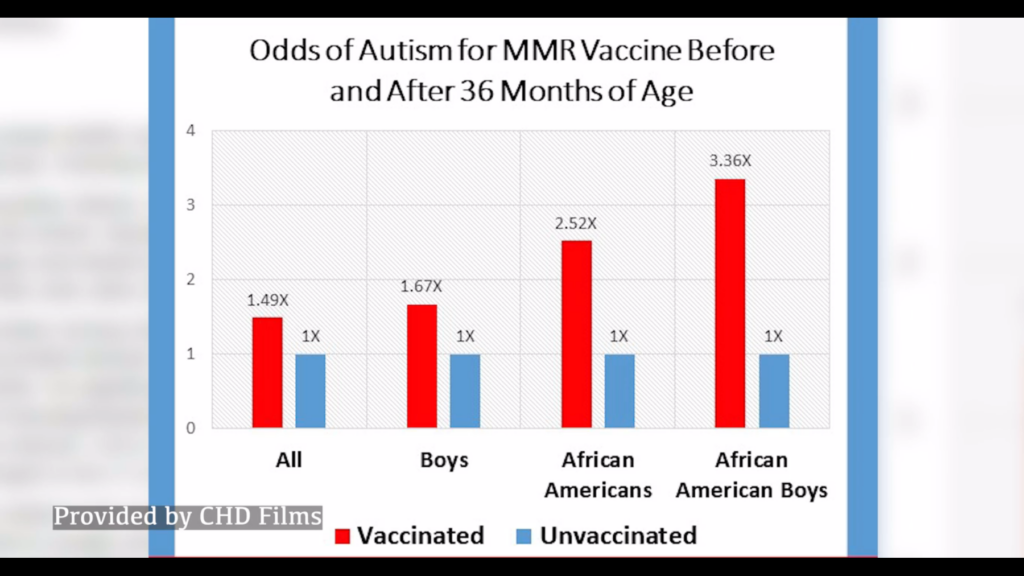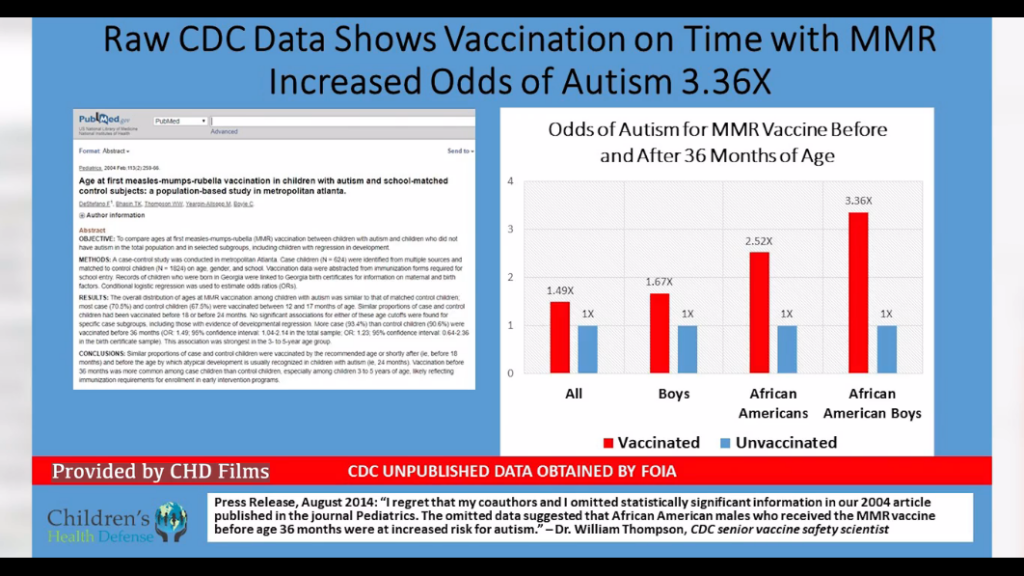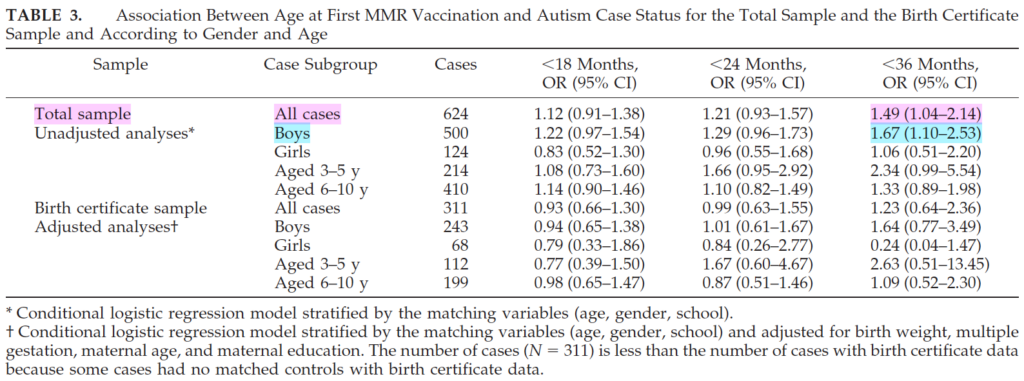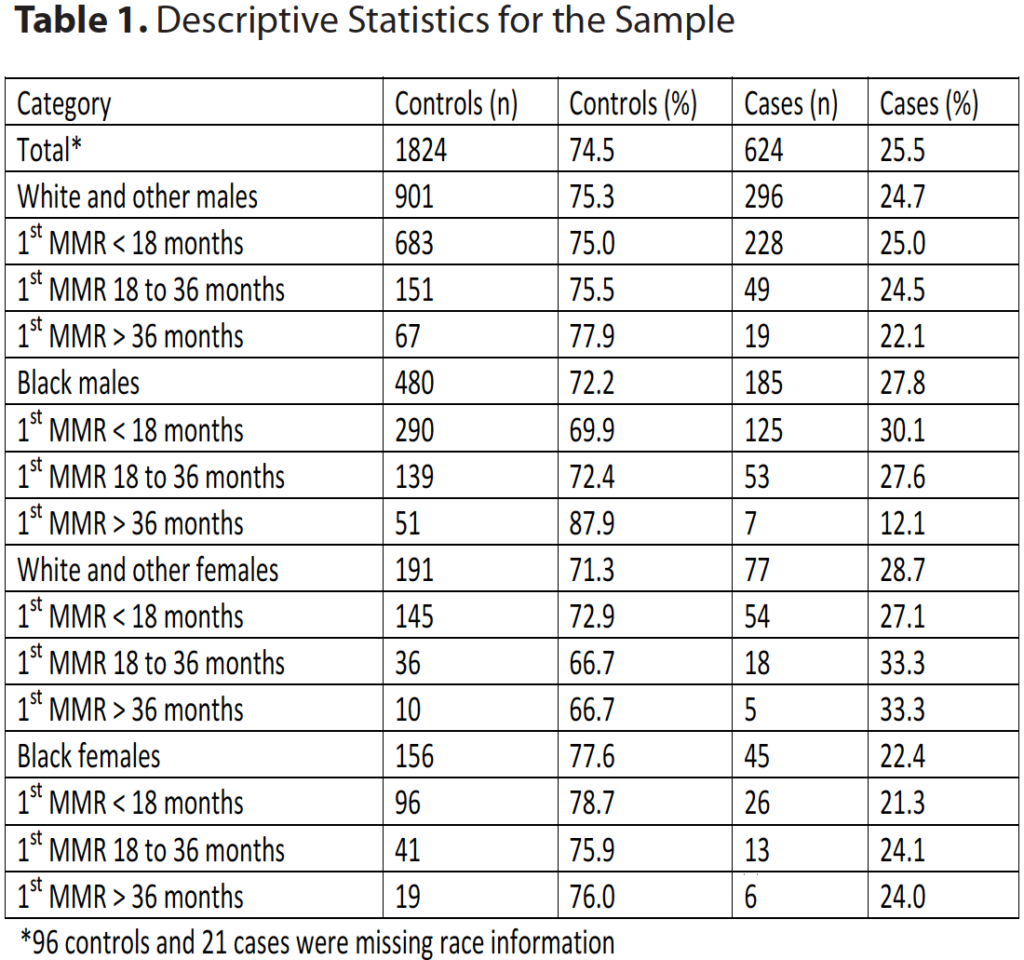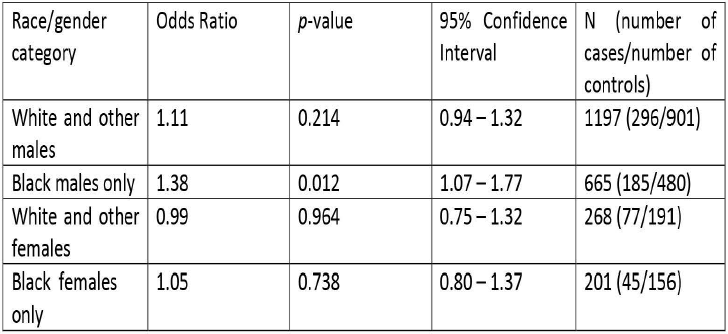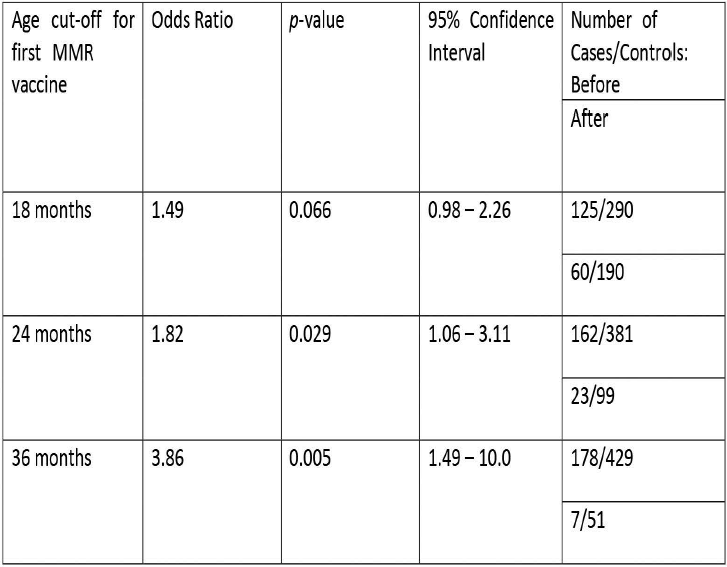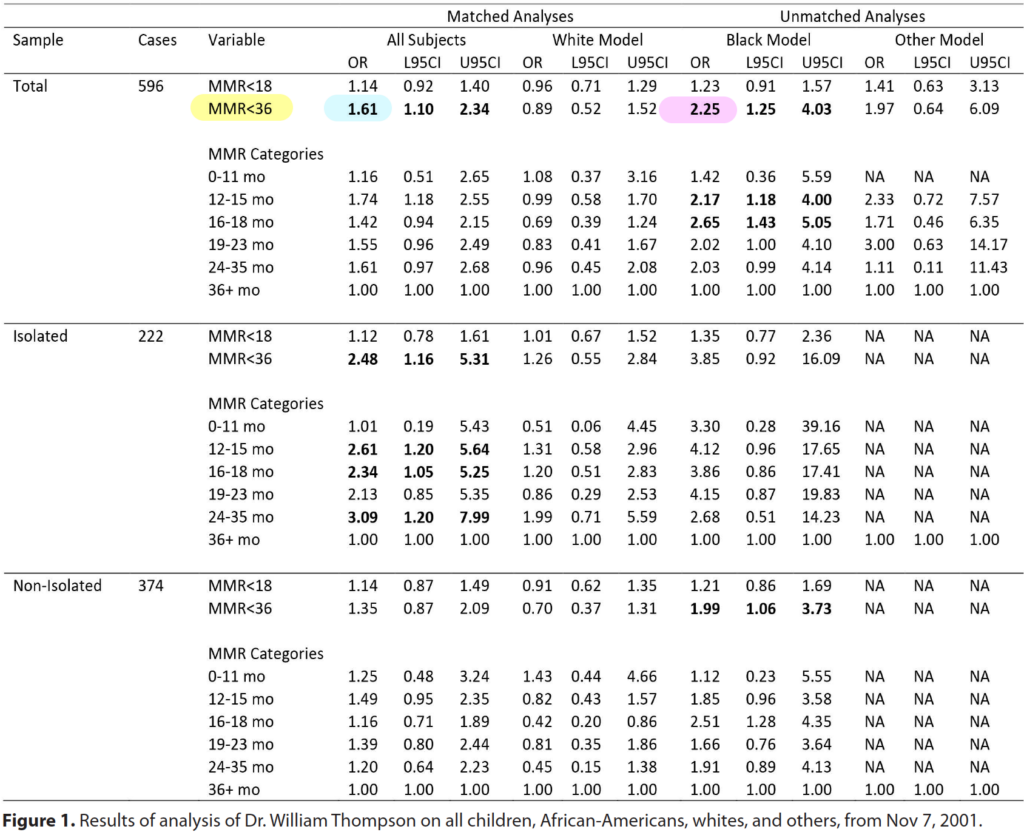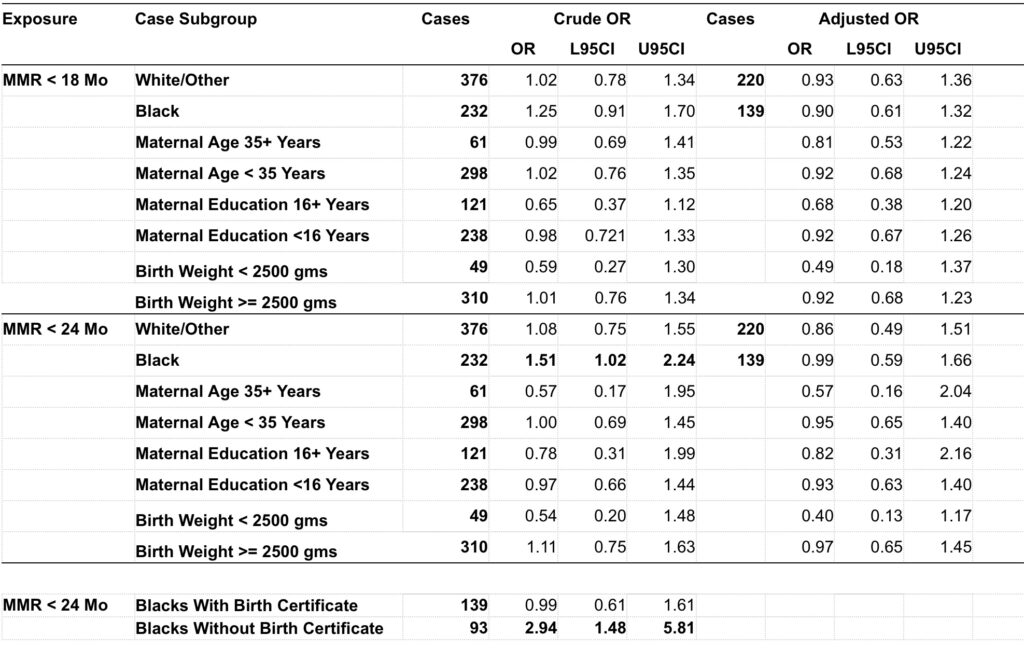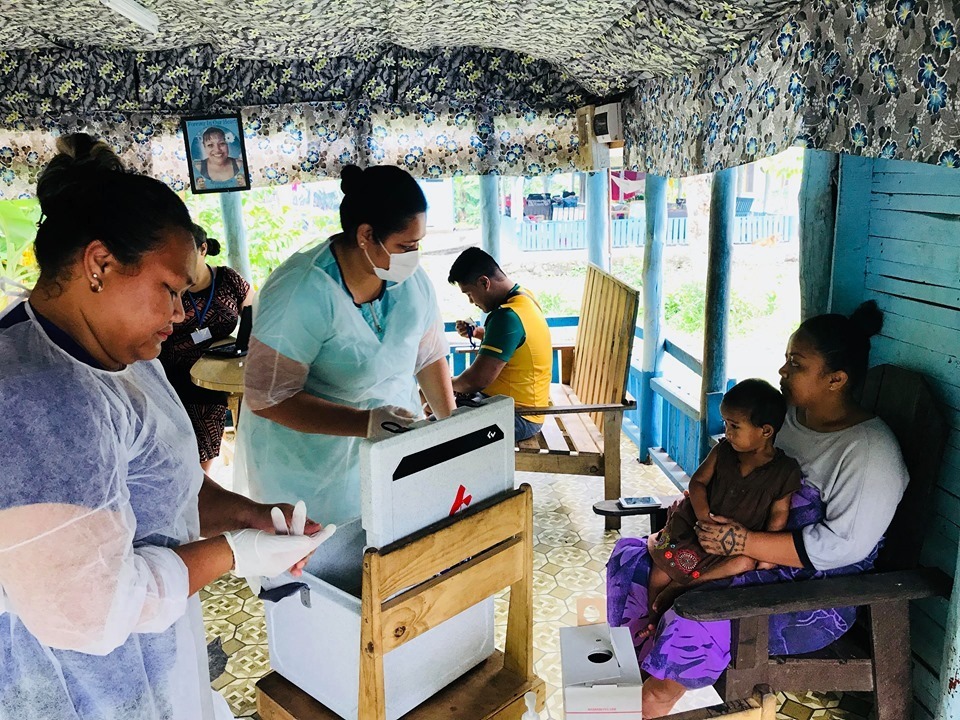MISLEADING CLAIMS
Issues | Vaccines and autism
Table of contents
CDC: “Vaccines do not cause autism”
Synopsis
The CDC’s unequivocal statement that “vaccines do not cause autism” has faced criticism for being overly broad and insufficiently supported by direct evidence for vaccines in its recommended schedule. According to ICAN, the federal lawsuit revealed that the CDC’s production of proof included 20 studies. However, only one pertained to the vaccines for which ICAN requested information and does not even support that conclusion. None of these studies directly substantiated the CDC’s claim that vaccines such as DTaP, Hepatitis B, Hib, PCV13, and IPV — the five injected into infants during their first six months — do not cause autism.
ICAN asserts that the CDC’s position cannot reasonably be considered valid due to this lack of vaccine-specific evidence. For example, while many studies examine the Measles, Mumps, and Rubella (MMR) vaccine or thimerosal, these are irrelevant to the vaccine queried in the lawsuit. Furthermore, ICAN argues that even the studies provided, such as the one by DeStefano et al. (2013), do not directly examine the individual vaccines but instead look at antigen exposure. The CDC lacks the evidence to support its sweeping assertion for all vaccines in its childhood immunization schedule.
Background
The assertion that “vaccines do not cause autism” has been presented as a categorical and unequivocal statement by the Centers for Disease Control and Prevention (CDC) and is widely accepted by the scientific community. However, this broad claim has been called into question by skeptics who argue that such a sweeping statement cannot be substantiated without comprehensive evidence for the vaccines in the CDC’s recommended schedule. In particular, legal actions led by the Informed Consent Action Network (ICAN) have challenged the CDC’s ability to produce studies directly addressing whether vaccines administered in the first six months of life — such as DTaP, Hepatitis B, Hib, PCV13, and IPV — are causally unrelated to autism. The ICAN lawsuit revealed that, despite the CDC’s public claims, no direct studies exist for these vaccines to affirmatively rule out an association with autism, raising concerns about the evidentiary basis of the CDC’s assurances and the transparency of public health messaging.
The CDC unequivocally asserts on its website that “Vaccines do not cause autism” (Figure 1).
Federal Court Case Reveals CDC Lacks Evidence to Claim ‘Vaccines Don’t Cause Autism,’ ICAN asserts
On March 3, 2020, CHD posted a link to an article from The Epoch Times webpage regarding the results of a federal lawsuit by ICAN. “Stipulated Order Proving CDC Has No Studies To Support Claim That Vaccines Given in First 6 Months of Life Do Not Cause Autism” (ICAN, 2020) (Figure 2). The lawsuit requested that the CDC produce all studies for several specific vaccines on the CDC schedule, which prove that such vaccines do not cause autism. CDC produced 20 studies, but only one pertained to the vaccines for which ICAN requested information and does not even support that conclusion. Science Feedback checked information in the article, an ‘independent third-party fact checker’ working with Meta (which owns Facebook and Instagram, among other platforms).
Science Feedback deems the claim inaccurate
Science Feedback deemed the claim “inaccurate,” asserting that a vast body of scientific literature shows no association between vaccines and autism (Figure 3). Facebook included the following notification to CHD’s page (Figure 4): “False Information found on Children’s Health Defense Children’s Health Defense shared information that’s been reviewed by Science Feedback. We’ve added a notice to the post so others can see that it’s false.” According to Science Feedback:
- “Verdict detail: Inaccurate: There is a wide body of scientific literature showing vaccines do not cause autism.”
- “Misrepresents source: Contrary to ICAN’s claim, there are studies addressing whether the vaccines specified in ICAN’s FOIA lawsuit are associated with autism. The studies show that no such association exists” (Science Feedback, 2020).
ICAN’s claim is not inaccurate
ICAN’s claim, “Stipulated Order Proving CDC Has No Studies To Support Claim That Vaccines Given in First 6 Months of Life Do Not Cause Autism,” is accurate based on the results of the ICAN vs CDC lawsuit in which the CDC failed to produce a single study supporting the claim that any of the five vaccines injected into babies three times during the first six months of life (Figure 5) — DTaP HepB, Hib, PCV13, and IPV — do not cause autism.
“At a minimum,” CHD argues in its Complaint vs Facebook (more on this below), “the phrase, ‘vaccines don’t cause autism,’ (Figure 6) cannot include all vaccines in the CDC’s 72-childhood vaccine dose schedule (16 separate vaccines), as there are simply no studies to address, much less verify, that claim for the entire schedule” (CHD vs Facebook Complaint, 2020).
The lawsuit requested that the CDC produce all studies for several specific vaccines on the CDC schedule, which prove that such vaccines do not cause autism (Figure 5 and Figure 7).
“CDC produced 20 studies (Figure 8), but only one of them pertained to the vaccines for which ICAN requested information, and does not even support that conclusion” (CHD vs Facebook Complaint, 2020).
“Science Feedback’s “fact-check” misrepresents the facts by repeating the trope that “numerous studies show that vaccines don’t cause autism” — even though this statement clearly cannot reasonably be considered valid in light of the CDC’s production in the ICAN lawsuit” (CHD vs Facebook Complaint, 2020).
In June of 2019, ICAN (Informed Consent Action Network) submitted a FOIA request to the CDC requesting “All studies relied upon by CDC to claim that the DTaP vaccine does not cause autism,” according to ICAN (2020). The organization submitted the same request for HepB, Hib, PCV13, and IPV, “as well as requesting the CDC provide studies to support the cumulative exposure to these vaccines during the first six months of life do not cause autism (Figure 8). “Despite months of demands,” ICAN explains, “the CDC failed to produce a single specific study in response to these FOIA requests.”
In December of 2019, “IAS (Institute for Autism Science) and ICAN filed a 36-page complaint in a federal court that accused the CDC of falsely claiming that ‘vaccines don’t cause autism,’ asserting that studies used to make this claim don’t exist” (Epoch Times 2020; perma).
“The CDC finally conceded,” ICAN asserts, “in a stipulation signed by a Federal court judge, that it has no studies to support that any of these vaccines do not cause autism.”
ICAN continues:
In the stipulation, the CDC was only able to identify 20 studies (Figure 8):
- One relating to MMR (a vaccine ICAN did not challenge) [a]*
- Thirteen relating to thimerosal (an ingredient not in any of the vaccines ICAN queried) [b]
- Five relating to both MMR and thimerosal [c]
- One relating to antigen (not a vaccine) exposure. [d]
On the CDC’s list of studies was a recent review by the Institute of Medicine (IOM), paid for by the CDC, which conducted a comprehensive review for studies relating to whether DTaP does or does not cause autism. The result was that the IOM could not identify a single study to support that DTaP does not cause autism.** Instead, the only relevant study the IOM could identify found an association between DTaP and autism [Geier and Geier, 2004].***
In other words, the CDC listed a review in response to the FOIA requests that proves that there are no studies to support that DTaP does not cause autism.
Notes On The Issue
* The bracketed lower-case English letters (e.g., [a], [b]) are included next to the relevant study or studies in identified Figure 8 below.
** “The evidence is inadequate to accept or reject a causal relationship between diphtheria toxoid–, tetanus toxoid–, or acellular pertussis–containing vaccine and autism,” the IOM report concludes (IOM, 2012).
*** The IOM said the study “was not considered in the weight of epidemiologic evidence because it provided data from a passive surveillance system [VAERS] and lacked an unvaccinated comparison population.”
Science Feedback asserts: “The CDC responded [to ICAN’s request] with a list of 20 peer-reviewed studies [Figure 7], several of which can already be found on its website. However, ICAN inexplicably concluded that this list meant that “there are no studies that prove vaccines don’t cause autism”, because “it has no studies to support that [DTaP, Hepatitis B, Haemophilus influenzae type b, PCV13 and inactivated polio vaccines] do not cause autism”.
ICAN specifically sought studies on the five vaccines injected into babies three times during the first six months of life (Figure 4) — DTaP HepB, Hib, PCV13, and IPV. They also requested the CDC provide studies to support that cumulative exposure to these vaccines during the first six months of life does not cause autism. As they explain in detail in their motive in ICAN and IAS vs CDC (2019):
- 6 | … numerous peer-reviewed articles report that a majority of parents of children with autism have and continue to report one or more vaccines as a cause of their child’s autism, including DTaP, Hepatitis B, Hib, PCV13, and IPV. Each of these vaccines are injected into babies three times during the first 6 months of life.
- 7 | In order to provide assurance to parents of children with autism that their child’s condition was not caused by one or more vaccines, the Autism Groups wanted to post the studies the CDC relied upon to assert that vaccines do not cause autism. Given the CDC’s clear and unequivocal statements on this issue and its assertions that the science supporting this conclusion is robust, the Autism Groups expected to be able to identify numerous studies establishing that none of the vaccines, especially those given to babies, cause autism.
- 8 | The Autism Groups, which include many doctors and scientists, engaged in research to identify these studies. However, as detailed below, the more research the Autism Groups conducted, the more apparent it appeared that these studies do not exist. Ultimately, the Autism Groups were unable to identify studies supporting the CDC’s claim that vaccines do not cause autism with regard to any of the vaccines administered during the first six months of life pursuant to the CDC’s childhood vaccine schedule.
- 9 | The Autism Groups therefore submitted a request pursuant to the Freedom of Information Act (“FOIA”) requesting the studies that CDC relies upon to claim that the DTaP vaccine, which is injected into babies at 2, 4, and 6 months of age, does not cause autism. The CDC failed to produce a single study to support that DTaP vaccines do not cause autism.
- 10 | The Autism Groups also submitted a FOIA request to the CDC for the studies it relies upon to claim that the Hepatitis B vaccine (injected into babies at birth and then at 1 and 6 months of age), Hib vaccine (injected at 2, 4, and 6 months of age), PCV13 vaccine (injected at 2, 4 and 6 months of age), and IPV vaccine (injected at 2, 4 and 6 months of age) do not cause autism. The CDC also failed to provide a single study to support that any of these vaccines do not cause autism.
- 11 | Given the CDC’s broad and unequivocal assertions that “Vaccines Do Not Cause Autism” and that a robust body of science supports this conclusion, the Autism Groups seek copies of the studies which support this conclusion; or they want clear confirmation from the CDC that there are no studies which support that DTaP, Hepatitis B, Hib, PCV13, and IPV do not cause autism. If these studies do exist, they should be readily available to the CDC.
- 12 | The Autism Groups sincerely hope that through this action the CDC will produce studies showing that DTaP, Hep B, Hib, PCV13, and IPV do not cause autism. However, given the history described below, they are concerned that the CDC probably has no such studies. If that is the case, the CDC should have to admit this fact and allow the public to weigh in on whether further proof is necessary before their government makes the unequivocal claim that “Vaccines Do Not Cause Autism.”
- 13 | The Autism Groups therefore bring this action seeking an order directing the CDC to provide a clear response to their FOIA requests in which the CDC must either admit it has no studies responsive to their requests or produce studies which are responsive to their requests.
Science Feedback asserts: “And as pediatrician Vince Iannelli explained in this article on Vaxopedia,” Science Feeback’s FC explains, ”the study by DeStefano et al. did in fact examine the individual vaccines listed in ICAN’s request.”
The study by DeStefano et al., (2013) did not examine the vaccines listed in ICAN’s request. The paper’s title explicitly states that the number of vaccine antigens was examined, not the number of vaccines. The limitations of this study are described in Turtles All The Way Down (Anonymous, 2022, pp. 169-177):
- “Summary: DeStefano 2013 is a classic example of a vaccine safety “spin study”. It was never intended to advance scientific knowledge but rather to be a battering ram for vaccine proponents to counter a specific claim often made by parents questioning the safety of vaccines. The study supposedly answered the parental concern that the large number of vaccines their children were receiving might have a negative impact on their health, and, specifically, might lead to autism. Yet the study didn’t investigate this hypothesis at all. Instead, the researchers chose to study the supposed effect of the total number of antigens in vaccines on autism development, using a dubious and scientifically baseless calculation. After reaching the desired result, the authors collaborated with the media to promote a false narrative to the public. Media news stories unanimously affirmed that DeStefano 2013 disproved the suggested link between “too many vaccines” and autism, though such a link was never even investigated. The study was funded by the CDC and two of its three authors were CDC employees, including the lead author who was the head of the center’s Immunization Safety Office. This raises serious questions as to the ethical conduct of the governmental agency entrusted with vaccine safety. It is equally concerning that such a glaringly flawed study hasn’t drawn so much as a smidgen of criticism in medical and scientific circles.”
CHD vs Facebook
Children’s Health Defense (CHD) filed a lawsuit claiming that Facebook, its CEO Mark Zuckerberg, and associated fact-checking organizations unfairly targeted and censored their content. The lawsuit alleges that this censorship violated CHD’s constitutional rights by collaborating with government entities to suppress free speech, falsely labeling CHD’s content as misinformation, engaging in deceptive and coordinated efforts to discredit their work, and causing significant reputational and financial harm. The following excerpt is taken from CHD’s 2020 complaint document.
CHD (CHD vs Facebook, pp. 65-66):
- D4.170 | On March 3, 2020, CHD posted a link to an article from The Epoch Times webpage regarding the results of a federal lawsuit by ICAN. Stipulated Order Proving CDC Has No Studies To Support Claim That Vaccines Given in First 6 Months of Life Do Not Cause Autism (ICAN, 2020).
- D4.171 | The lawsuit requested that the CDC produce all studies for several specific vaccines on the CDC-schedule which prove that such vaccines do not cause autism. CDC produced 20 studies, but only one of them pertained to the vaccines for which ICAN requested information, and does not even support that conclusion.
- D4.172 | This discovery was a watershed moment. Yet Science Feedback’s “fact-check” misrepresents the facts by repeating the trope that “numerous studies show that vaccines don’t cause autism” — even though this statement clearly cannot reasonably be considered valid in light of the CDC’s production in the ICAN lawsuit. Indeed, at a minimum, the phrase, “vaccines don’t cause autism,” cannot include all vaccines in the CDC’s 72-childhood vaccine dose schedule (16 separate vaccines), as there are simply no studies to address, much less verify, that claim for the entire schedule. Science Feedback’s “fact-check” is deceptive and misleading. …
Conclusions
According to ICAN, the federal lawsuit revealed that the CDC’s production of evidence included only 20 studies. However, only one pertained to the vaccines for which ICAN requested information and does not even support that conclusion. None of these studies directly substantiated the CDC’s claim for vaccines and autism such as DTaP, Hepatitis B, Hib, PCV13, and IPV — the five vaccines injected into infants during their first six months. The findings from the ICAN vs. CDC lawsuit challenge the foundation of the CDC’s claim that “vaccines do not cause autism.”
The CDC’s 2004 MMR and Autism Study
Did an RFK Jr video misrepresent a CDC study?
Synopsis
The 2004 CDC study examining the relationship between the timing of the MMR vaccine and autism in children has been the focus of scrutiny, particularly regarding its handling of race-specific data. Dr. William Thompson, a coauthor and lead statistician on the study, invoked federal whistleblower protection in 2014, claiming he and his coauthors intentionally omitted statistically significant findings that suggested an association between early MMR vaccination and autism in African-American boys. Brian Hooker’s subsequent reanalysis of the CDC data revealed a statistically significant positive association, consistent with Thompson’s earlier, unpublished analysis. His internal analysis from 2001-2002 showed a “huge” race effect that was excluded from the published study by restricting the analysis to children with Georgia birth certificates, reducing the sample size and statistical power. The documentary Medical Racism presented these developments, arguing that public health authorities failed to be transparent about vaccine risks, particularly for vulnerable populations. Critics of the documentary, such as FactCheck.org, accused it of misrepresenting the 2004 CDC study. Closer examination reveals that the documentary explicitly focuses on the omissions highlighted by Thompson and does not claim that the original study reported a link.
Background
On March 11, 2021, a documentary entitled Medical Racism: The New Apartheid was released (Figure 1), a project of CHD Films, LLC, and co-produced by RFK Jr. Statements from the one-hour documentary and its accompanying fact sheet was contested by FactCheck.org (2021; perma), an ‘independent third-party fact checker’ working with Meta (which owns Facebook and Instagram, among other platforms).
FactCheck.org, in its fact-check entitled, “RFK Jr. Video Pushes Known Vaccine Misrepresentations,” refers to the film as a “disinformation video,” asserting the documentary “relies on innuendo — citing historical examples of ethical failures in medicine, misrepresenting various scientific studies, and suggesting that the medical establishment can’t be trusted.” Apparently, as a result of this fact-check, Facebook removed Kennedy’s film from its site, according to the Financial Times (2021).
One of the misrepresentations identified by FactCheck.org: “The video misrepresents a 2004 study by the Centers for Disease Control and Prevention that did not find an association between autism and measles, mumps and rubella vaccines.”
The 2004 CDC study published in Pediatrics sought to investigate whether the timing of MMR vaccination was associated with autism in children. The study’s authors concluded that there was no causal link, a finding that has been widely cited in support of vaccine safety. However, internal documents and testimony from Dr. William Thompson, one of the study’s coauthors, indicate that critical race-specific data were excluded from the final publication. These data reportedly showed a statistically significant association between early MMR vaccination and autism diagnoses in African-American boys.
In 2014, Brian Hooker published a reanalysis of the original CDC data, which incorporated the omitted race-specific findings. His analysis confirmed a 3.36 times greater risk of autism in African-American boys who received the MMR vaccine before 36 months of age compared to those vaccinated later. Although Hooker’s study was retracted, the methodology mirrored that of the original CDC analysis but included a larger dataset, raising questions about the validity of the original study’s conclusions. The documentary highlighted these developments, challenging the vaccine safety narrative and its implications for minority populations.
FactCheck.org’s fact-check
The documentary refers to a 2004 CDC study comparing the ages at first MMR vaccination between children with autism and children who did not have autism and whether there was a correlation between the timing of vaccination and a diagnosis of autism. FactCheck.org explains: “If vaccines were contributing to autism, then one might expect to see more autism cases in kids who received the vaccine earlier … The study did not find that vaccines were causing autism.”
But Kennedy’s organization falsely claims that the ‘study discovered that African-American boys who receive the MMR vaccine ‘on-time’ by the age of 3 are 3.36 times more likely to be diagnosed with severe autism as Black boys who waited until they were older.’ That’s not what the study found. That’s what a purported reanalysis of the data claimed to find a decade later.
— FactCheck.org, 2021
In 2014, Brian Hooker authored a reanalysis of the data from the 2004 study. But the paper was retracted, FactCheck.org notes. It was retracted because “there were undeclared competing interests on the part of the author,” and “concerns about the validity of the methods and statistical analysis,” according to the retraction notice. FactCheck.org also points out a conflict of interest: Hooker’s research was funded by an anti-vaccine group where Hooker reportedly served on the board. FactCheck.org points to an additional conflict of interest: “Hooker had filed a claim under the National Vaccine Injury Compensation Program alleging that vaccines caused his son’s autism. The lawsuit was pending at the time Hooker published the paper but was later dismissed in a 58-page opinion in which the judge said, ‘[T]his case is not a close call.’ The judge found no connection between vaccines and the boy’s disorder.”
FactCheck.org also noted that Hooker was in contact with one of the researchers on the 2004 CDC study:
Prior to publishing his paper, Hooker had spoken to Dr. William Thompson, one of the researchers on the original CDC study. Thompson had shared his concerns about the study’s process, but later explained that he did not know Hooker had been recording their conversations and had no control over how Hooker used the recordings.
Thompson still works at the CDC, and when we reached him by phone, he referred us to his lawyer, Rick Morgan. Neither would speak to us on the record, but Morgan provided us with Thompson’s 2014 statement. It said, in part: “I want to be absolutely clear that I believe vaccines have saved and continue to save countless lives. I would never suggest that any parent avoid vaccinating children of any race. Vaccines prevent serious diseases, and the risks associated with their administration are vastly outweighed by their individual and societal benefits.”
“So, the claim in the video uses a discredited paper to misrepresent the findings of a CDC study,” FactCheck.org concludes.
The fact sheet
Here’s the claim in CHD’s fact sheet:
A Centers for Disease Control and Prevention (CDC) study [CHD, 181210] discovered that African-American boys who receive the MMR vaccine “on-time” by the age of 3 are 3.36 times more likely to be diagnosed with severe autism [Hooker, 2018] as Black boys who waited until they were older.
— Fact sheet, Medical Racism (CHD Films)
The claim that the “study discovered that African-American boys who receive the MMR vaccine ‘on-time’ by the age of 3 are 3.36 times more likely to be diagnosed with severe autism as Black boys who waited until they were older” comes from the fact sheet.
CHD does not explain in its fact sheet that the discovery of an association between the timing of the MMR vaccine and autism in black children was deliberately omitted from the 2004 CDC study (at least according to Thompson) and only later reported in an independent reanalysis.
This context is provided if one visits the link ([CHD, 2018]: “CDC Data Reanalysis Shows Strong, Statistically Significant Relationship Between MMR Vaccine & Autism”) included in the quoted claim in the fact sheet. The fact sheet links to Hooker’s republished reanalysis ([Hooker, 2018]: “Reanalysis of CDC Data on Autism Incidence and Time of First MMR Vaccination”) and not the 2004 CDC study when it provides the reported association, but the fact sheet itself doesn’t provide this context. Note: Hooker’s 2014 reanalysis (Hooker, 2014) was republished in the Winter 2018 Edition of the Journal of American Physicians and Surgeons (Hooker, 2018).
The documentary
Dr. William Thompson, a coauthor and lead statistician of the 2004 CDC study, invoked federal whistleblower status and said that he and his coauthors intentionally withheld data finding an association between the timing of the MMR vaccine and autism in black children.
I regret that my coauthors and I omitted statistically significant information in our 2004 article published in the journal Pediatrics. The omitted data suggested that African American males who received the MMR vaccine before age 36 months were at increased risk for autism. Decisions were made regarding which findings to report after the data were collected, and I believe that the final study protocol was not followed.
— August 2014 Statement of Dr. William Thompson (Morgan Verkamp, 2014; perma)
The documentary shows a clip of Representative Bill Posey calling for an investigation of the CDC study at the House of Representatives. Thompson provided Posey’s office with documents related to the 2004 CDC study. Posey requested excerpts from a September 2014 statement (2014) written by Thompson be entered into the record. Among those excerpts:
At the September 5th meeting we discussed in detail how to code race for both a sample and the birth certificate sample. At the bottom of Table 7, it also shows that, for the nonbirth certificate sample, the adjusted race effect statistical significance was huge.
All the authors and I met and decided somewhere between August and September 2002 not to report any race effects for the paper.
Sometime soon after the meeting we decided to exclude reporting any race effects, the co-authors scheduled a meeting to destroy documents related to the study. The remaining four co-authors all met and brought a big garbage can into the meeting room and reviewed and went through all the hard copy documents that we thought we should discard and put them in a huge garbage can. However, because I assumed it was illegal and would violate both FOIA and D.O.J. Requests, I kept hard copies of all documents in my office and I retained all associated computer files. I believe we intentionally withheld controversial findings from the final draft of the Pediatrics paper.
— Rep. Bill Posey reading from a September 2014 statement of Dr. William Thompson (C-SPAN, 150729; CREC, 150715) [15:47]
In the documentary, Dr. James Neuenschwander mentions the results from the reanalysis:
Literally, they were throwing away data. They changed the study design, they were throwing away data so that there wouldn’t be an association [between the timing of the MMR vaccine and autism cases]. When you put that data back in — we didn’t know about this until William Thompson fessed up, became a whistleblower and said this happened — black boys, particularly, 3.36, 3.4 times more likely to develop autism if they got that MMR vaccine before they were three years old vs after they were three years old. And again we routinely give the MMR vaccine between 12 and 15 months, so, it was a big deal.”
— Dr. James Neuenschwander (CHD Films) [17:30]
The documentary then plays the audio of a 2014 phone call from Dr. Thompson:
Here’s what I shoulder. I shoulder that the CDC has put the research 10 years behind. Because the CDC has not been transparent, we’ve missed 10 years of research because the CDC is so paralyzed right now by anything related to autism. They’re not doing what they should be doing because they’re afraid to look for things that might be associated.
— Dr. William Thompson (CHD Films) [18:15]
At the end of the clip, the documentary displays the caption: “Dr. Thompson has never retracted the Whistleblower statement.”
There’s one more reference to the CDC in the film’s data. Minister Tony Muhammad says:
The CDC data showed black boys, who got their MMR on-time, were 336% as likely to be diagnosed with autism as black boys who waited. This effect was not seen in white children. No one vaccine fits everybody. We are all not genetically the same.
— Minister Tony Muhammad [25:53]
When he is speaking, the film displays a chart (Figure 1) that combines results from the 2004 CDC study and Hooker’s 2014 reanalysis. The film then shows the same chart beside the 2004 study’s abstract, a quote from Thompson’s August 2014 statement at the bottom, and a note explaining “CDC UNPUBLISHED DATA OBTAINED BY FOIA” (Figure 2).
The chart misrepresents the results by showing a reference group and labeling this group as “Unvaccinated.” All subjects in the study were vaccinated. The studies compared the proportions of case (autism) and control (no autism) children vaccinated before and after three years of age. For example, based on a rough calculation using the data provided by DeStefano et al., 2004 (see Fig 1. in the paper), the proportions of all case and control children vaccinated before and after three years of age are 1.03 (.93/.91) and 0.70 (.07/.09), respectively, yielding an odds ratio of 1.48 (1.03/0.70).
Nevertheless, to make more sense of what the CDC study and Hooker’s reanalysis showed, a closer look is needed.
What the data shows
What the data shows | The 2004 CDC study
The 2004 CDC study compared the ages at first MMR vaccination between children with autism and children who did not have autism in metropolitan Atlanta in a retrospective case-control study. The cases (n = 624), children with autism, were identified by the Metropolitan Atlanta Developmental Disabilities Surveillance Program (MADDSP). The controls (n = 1824), children who did not have autism, were identified from school records and matched to cases in a 3:1 fashion based on age, gender, and school of attendance.[1]
For all case and control children, the “total sample” — demographic information, including date of birth, gender, race, and birth state- could be obtained from each child’s permanent school record. This allowed them to match cases to controls, stratifying by age, gender, and school. The investigators were also able to match about half of the case (n = 355; 56%) and control (n = 1020; 56%) children to Georgia state birth certificate records — the “birth certificate subsample” — which gave them additional information, including birth weight, multiple gestation, mother’s age, and education.
The investigators analyzed associations using three specific age cutoffs, comparing the proportions of case and control children vaccinated before and after 18 months, 24 months, and 36 months. For the primary analyses and reported results, the total sample was used. They also performed a subanalysis using the birth certificate subsample to evaluate the possible confounding variables they had access to (i.e., birth weight, multiple gestation, mother’s age, and education).
The 2004 CDC study reported a statistically significant association when comparing all children receiving the MMR before and after three years of age.
The investigators did not find statistically significant associations for proportions of vaccinated case and control children using the 18 and 24-month cutoffs. They did find a statistically significant association for the 36-month cutoff. When comparing children receiving the vaccine before and after 36 months of age, an odds ratio (OR) of 1.49 was observed for autism incidence, with children receiving the vaccine earlier having greater odds of having an autism diagnosis (see pink highlights in Table 4).
The investigators also found a positive association when looking at boys only (see blue highlights in Table 4); an OR of 1.67 was observed for autism incidence when comparing boys receiving the vaccine before and after 36 months of age.
“Because of the smaller size of the birth certificate sample,” the investigators note, “the 95% CIs for all age categories were wider and included 1.0.” In other words, they didn’t find any statistically significant associations in the subanalysis because of the smaller sample size.
“Although the birth certificate sample results in [Table 4] were adjusted for maternal and birth characteristics, “the investigators explain, “the ORs were not different from unadjusted results for the birth certificate sample (data not shown), indicating that there was little to no confounding effect by these factors.”
The investigators describe the similarities and differences between the total sample and the birth certificate subsample in more detail in the Discussion section of the paper:
Among case and control children whose records we were able to match with Georgia birth certificate files, we performed a subanalysis to evaluate possible confounding by differences in birth and maternal characteristics. For the most part, the results were not greatly different from those in the total sample. The differences that were noted were predominantly of lower ORs in the birth certificate sample. These differences seemed to be primarily a result of restricting the analysis to children who were born in Georgia and could be matched to a state birth certificate and not to confounding by maternal or birth characteristics. Thus, the differences between the 2 samples could represent random fluctuation or a possible bias related to being born outside Georgia.
Additionally, the investigators examined the associations according to these maternal and birth characteristics available from the birth certificate records, including birth weight, mother’s age, and education. They didn’t include multiple gestation, probably because of the small number of children in the sample that were twins+ (cases, n = 26; controls, n = 30).
Curiously, they also included race in this analysis, even though the school records for the total sample contained race information. Recall that age, gender, and race information were obtainable for all children in the study. Why didn’t they analyze race using the total sample and perform a subanalysis using the birth certificate, as they did for age and gender (as shown in Table 4)?
No statistically significant association was found for the four characteristics (Table 5). For the 36-month cutoff, “there were suggestions of possible associations within the subgroups of children whose mothers were older or had more years of education,” the investigators explain, “but the CIs were very wide and included 1.0.” As for race, at the 36-month cutoff, an OR of 1.68 was observed for autism incidence in black children, but this difference was not statistically significant (Table 5).
Overall, the study’s results suggest to the investigators that timing of the MMR vaccine is not associated with autism since they didn’t find statistically significant associations for proportions of vaccinated cases and control children using the 18 and 24-month cutoffs.
While there was a statistically significant association for the 36-month cutoff, the investigators explain that the significant relationship was more likely due to vaccination requirements for enrollment into early intervention programs for autistic children. State law in the United States typically allows for early intervention services for children between birth and three years of age who have disabilities, developmental delays, or are at risk of developmental delays. Stated another way, the MMR vaccine didn’t cause autism; the diagnosis of autism caused them to get the MMR vaccine (i.e., reverse causation).
The 2004 CDC study
[1] “However,” the investigators explain, “when a case child was attending a psychoeducational school, a special school for children with behavioral and developmental difficulties, control children were selected from the school in the child’s residential area that the child would have attended had the child not had a disability.”
What the data shows | Hooker’s 2018 reanalysis
In 2018, Brian Hooker performed a reanalysis of CDC data about the 2004 CDC study comparing the ages at first MMR vaccination between children with autism and children who did not in metropolitan Atlanta in a retrospective case-control study (DeStefano et al., 2004).
As discussed above (see: What the data shows | the 2004 CDC study), the 2004 CDC investigators reported results on two sets of children:
- The “total sample” — used to perform the main analysis
- All cases (autism, n = 624) and matched controls (no autism, n = 1824) in the study
- Cases were identified from the Metropolitan Atlanta Developmental Disabilities Surveillance Program (MADDSP). Controls were identified from school records and matched to cases in a 3:1 fashion based on age, gender, and school of attendance.
- The “birth certificate subsample” — used to perform the subanalysis
- The subset of cases (n = 355) and controls (n = 1020) with a Georgia birth certificate
- Birth certificates gave the investigators additional information, including birth weight, multiple gestation, mother’s age, and education, allowing them to adjust for these potential confounding variables.
The investigators analyzed associations using the total sample and three specific age cutoffs, comparing the proportions of case and control children vaccinated before and after 18 months, 24 months, and 36 months.
They did not find statistically significant associations between the proportions of vaccinated cases and control children using the 18- and 24-month cutoffs. For the 36-month cutoff, they showed a statistically significant assocation (OR: 1.49; 95% CI 1.04-2.14) (Table 4). The investigators also found a significant association when looking at boys only (no such association was found in girls); an OR of 1.67 (95% CI 1.10-2.53) was observed for autism incidence when comparing boys receiving the vaccine before and after 36 months of age (Table 4). While there was a statistically significant association for the 36-month cutoff, the investigators explain that the significant relationship was more likely due to vaccination requirements for enrollment into early intervention programs for autistic children.
When considering race as a category, only the results for the “birth-certificate” sample were presented, even though the school records for all children in the total sample contained race information. If you read the section above covering the documentary, you know that this omission is why Dr. William Thompson went public and claims he and his coauthors deliberately refrained from reporting the results for the total sample. (More on this in the next section: What the data shows | Thompson’s 2001-2002 analysis.) No statistically significant relationships were found for either race category (White/other, and Black).[1] At the 36-month cutoff, an OR of 1.68 (95% CI 0.82-3.47) was observed for autism incidence in black children, but this difference was not statistically significant (Table 5). Hooker suggests the association didn’t reach statistical significance because the birth-certificate subsample used was about 40% smaller than the total sample (Table 6).
Hooker then reanalyzed the same data set (i.e., MADDSP cases matched to controls stratified by age, gender, and school attended) using the same methodology (i.e., conditional logistical regression) as the 2004 CDC study. Given that race data were available for the total sample, he didn’t limit analyses regarding race to the birth certificate subsample.
“Because DeStefano et al. did not match cases and controls by race,” Hooker notes, “there is a slight deviation from 1:3 matching in each separate sample to be considered” (Table 7).
Unlike the analysis by DeStefano et al., the first analysis in this study treated the age of the first MMR vaccination as a continuous independent variable reported in years of age.
Also, unlike the original DeStefano et al. analysis [2] in this study, the presence of autism diagnoses was evaluated without using covariates.
Cases were matched to controls based on birth year and school attended. The results for these four analyses are shown in Table 2. [Table 8]
“The only race/gender category showing a statistically significant relationship is black males, who appear to be 38% more likely to receive an autism diagnosis if they received the first MMR vaccine one year earlier than the controls.”
“Following the method of DeStefano et al., conditional logistic regression was performed for black males only, except that the age category was dichotomized for first vaccine receipt before or after 18 months, 24 months, or 36 months, instead of just for before or after 36 months (Table 9).”
Hooker’s 2018 reanalysis
[1] Whites are considered in the same category as “others,” such as Asian, Hispanic, and Native Americans, because there were very few children in the “other” category.
What the data shows | Thompson’s 2001-2002 analysis
In Brian Hooker’s 2018 reanalysis of CDC data used in the 2004 CDC study on timing of the MMR vaccine and autism, statistically significant relationships were observed in the total sample of African-American males when looking at those individuals who were vaccinated prior to and after a 24-month and 36-month age cutoff.
”CDC officials observed very similar relationships as early as November 2001,” Hooker explains in the Abstract, “but failed to report them in their final publication.” William Thompson, a senior scientist at the CDC and coauthor and lead statistician of the 2004 CDC paper, contacted Hooker in 2013 and 2014, sharing “many issues regarding fraud and malfeasance in the CDC, specifically regarding the link between neurodevelopmental disorders and childhood vaccines,” according to an April 2016 statement by Hooker. “Dr. Thompson and I spoke on the phone more than 40 times over a 10 month period and he shared thousands of pages of CDC documents with me.” As discussed above (see The documentary section), this information was eventually turned over to Congress Rep. Bill Posey through Thompson’s whistleblower attorney.
The documents, Hooker’s 2018 reanalysis, and Thompson’s September 2014 full statement reveal that Thompson had found statistically significant associations in black children as early as 2001. Recall from Thompson’s August 2014 statement, he said he and his coauthors omitted data suggesting that African American males who received the MMR vaccine before age 36 months were at increased risk for autism. “Decisions were made regarding which findings to report after the data were collected,” Thompson says, “and I believe that the final study protocol was not followed.”
Hooker addresses the issue in the Discussion section of his 2018 paper, explaining that by only including the results for the birth certificate subsample and not the total sample, and because the CDC investigators did not consider gender separately, “this obscured the statistically significant observation of the apparent effect of vaccine timing on the incidence of autism in black males.”
Hooker then presents a data table generated as a part of an analysis from November 2001 obtained from Thompson (Table 10).
Thompson’s data show statistically significant ORs for all subjects in the sample in the matched analysis (see the blue highlight in Table 10) at the 36-month cutoff and for black children only in the unmatched analysis (see the pink highlight in Table 10).
“The former results were presented in the final paper by DeStefano et al.,” Hooker explains, “but the latter results for African-Americans were omitted in favor of results for the “birth-certificate sample” only.”
Thompson’s September 2014 statement says that when he analyzed the data (c. July 2002) by race using only the birth certificate subsample, he found a statistically significant association in black children in the unadjusted analysis at the 24-month cutoff (Table 11).
As part of this analysis, he compared the results using only the birth certificate subsample with the cohort of subjects without a Georgia birth certificate: the very individuals who wound up on the cutting room floor in the 2004 CDC publication. At the bottom of Table 11, “it also shows that for the NON-BIRTH Certificate Sample, the adjusted RACE effect [statistical] significance was HUGE,” Thompson says. “That,” Thompson contends, “is the main reason why we decided to report the RACE effects for ONLY the BIRTH Certificate Sample.”
The documentary did not misrepresent the 2004 CDC study
Nobody in the documentary claims the 2004 CDC study showed an association between the timing of the MMR vaccine and autism in African-American boys. Instead, the film shows that Dr. William Thompson, a coauthor and lead statistician of the 2004 CDC study, believes that he and his coauthors intentionally withheld data demonstrating an association in black children.
Taken together, Hooker’s 2018 reanalysis reports statistically significant information that is consistent with Thompson’s analysis of the data performed before publication — data he regrets omitting. If Thompson’s account is genuine, the CDC study did, in fact, find an association in African-American children, but they didn’t publish it.
FactCheck.org’s assertions are inaccurate and misleading
The fact-check is inaccurate and/or misleading on several accounts.
Inaccurate and misleading: As discussed, while the accompanying fact sheet quoted above is missing context, the documentary never claims the 2004 CDC study reported a link between the timing of the MMR vaccine and autism in black children.
Inaccurate: The 2004 CDC study did find a statistically significant positive association when comparing all children receiving the MMR before and after three years of age (Table 4), which contradicts FactCheck.org’s assertion that the study “did not find an association between autism and measles, mumps and rubella vaccines.”
Misleading: FactCheck.org’s account of Thompson’s role in the story seems to imply that Thompson disagreed with the results from Hooker’s reanalysis showing an association between timing of the MMR vaccine and autism in black children, quoting his August 2014 statement, “in part,” where he expresses strong support for vaccinating children. The part that FactCheck.org fails to mention anywhere in its fact-check is that in August 2014, Thompson invoked federal whistleblower protection and testified to a Congressman that he and his coauthors withheld statistically significant information in the 2004 CDC study. In the same August 2014 statement FactCheck.org pulls a quote about supporting vaccines, Thompson says, “The omitted data suggested that African American males who received the MMR vaccine before age 36 months were at increased risk for autism.” Thompson’s own analyses (see Table 2 and Table 3) are consistent with Hooker’s reanalysis (see Table 1) that followed the same methodology as the 2004 CDC study but didn’t exclude children lacking a birth certificate.
Conclusions
The allegations of data omission in the 2004 CDC study raise serious concerns about the integrity of scientific reporting and public health transparency. Dr. William Thompson’s whistleblower testimony, corroborated by Brian Hooker’s reanalysis, suggests that significant findings regarding race-specific risks were intentionally excluded, potentially undermining the CDC’s conclusions about vaccine safety for all demographics. The documentary Medical Racism accurately portrays these allegations without misrepresenting the original study, contrary to claims by FactCheck.org. Instead, it highlights the importance of transparency and the ethical responsibility of public health authorities to disclose all relevant findings. The controversy highlights the tension between maintaining public confidence in vaccines and addressing valid concerns about vaccine safety.


